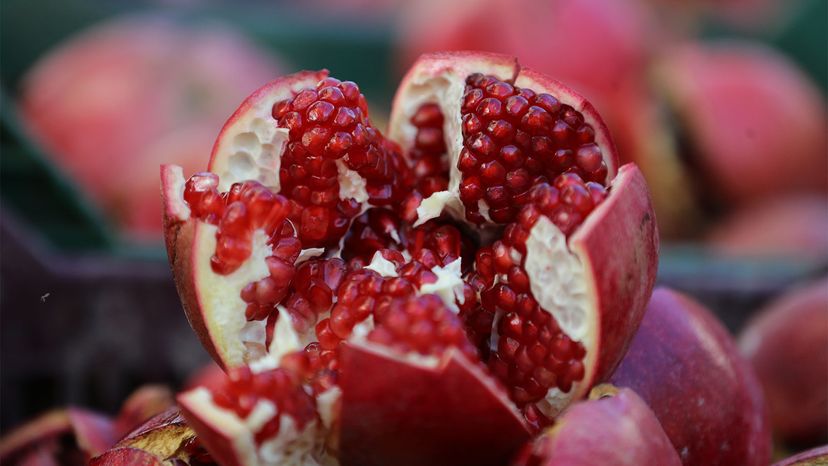
Not only are pomegranates a beautiful crimson addition to any kitchen counter, but they're really good for you too. Cut open a pomegranate and inside you'll find red jewel-like seeds, called arils, that are rich in vitamin C, vitamin K and potassium. If you eat the seeds whole, including the crunchy white centers, you'll also gain a fair amount of fiber.
So how do you find the ideal pomegranate amongst a mound of its kind? You'll want one that is heavy, which signals the weight of its juice. It should be firm without soft spots, and it will probably have a slightly square shape to it because the sides tend to flatten as it ripens. Although pomegranate rinds range from pink to brown, one that is deeply red in color is ideal.
Advertisement
Sometimes, though, the biggest obstacle to gaining the benefits of fresh pomegranate is figuring out how to cut and eat the fruit in the first place. Pomegranates aren't exactly known for being easy to eat, so here are a few helpful steps to get you started.



